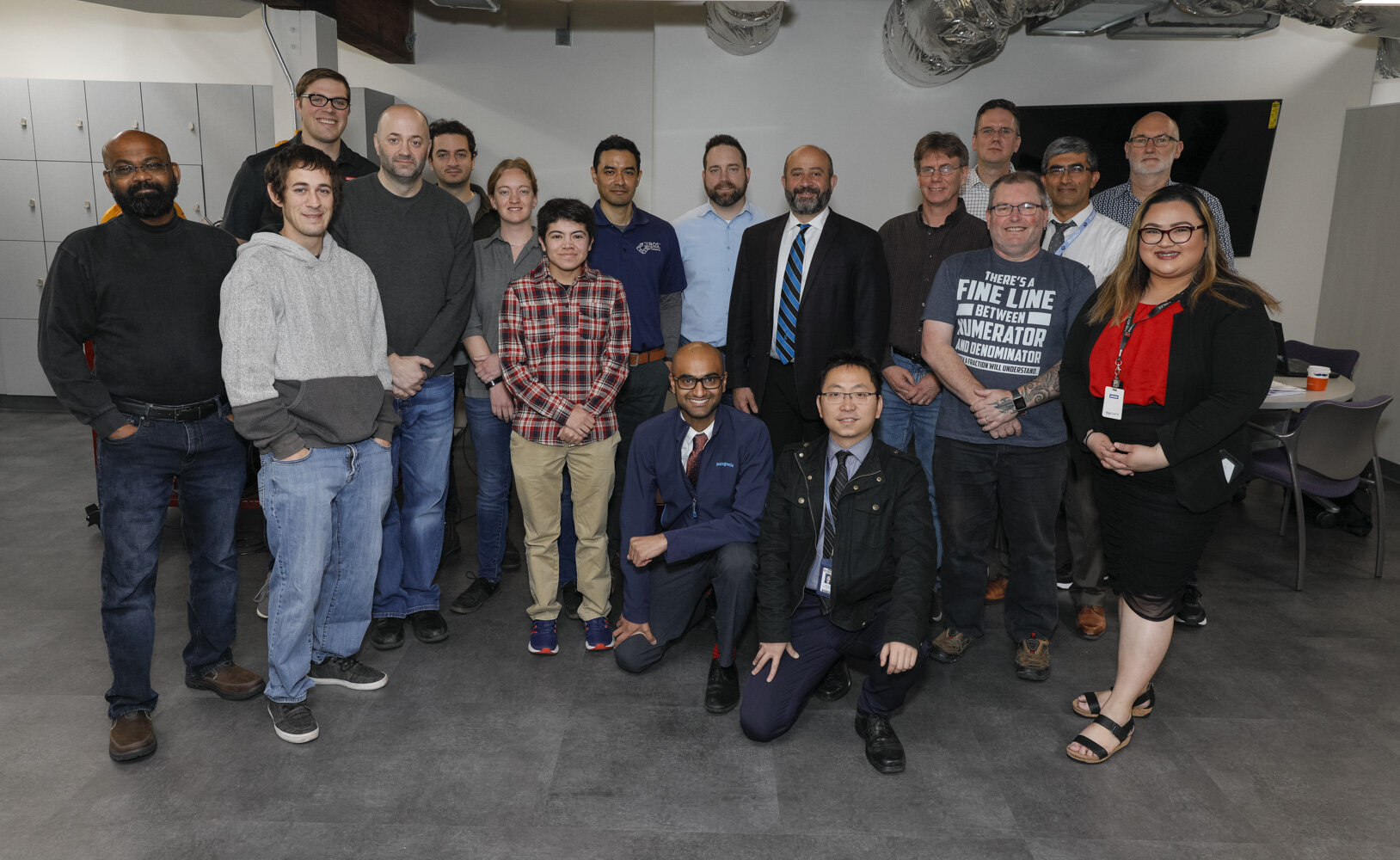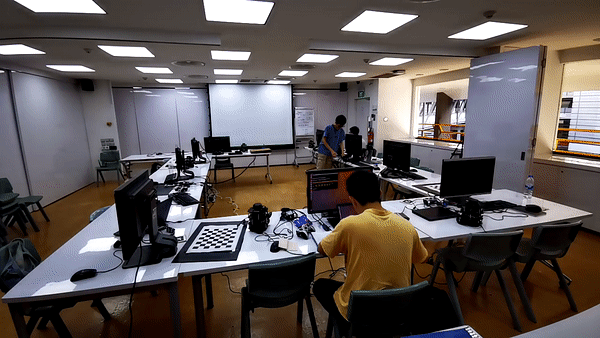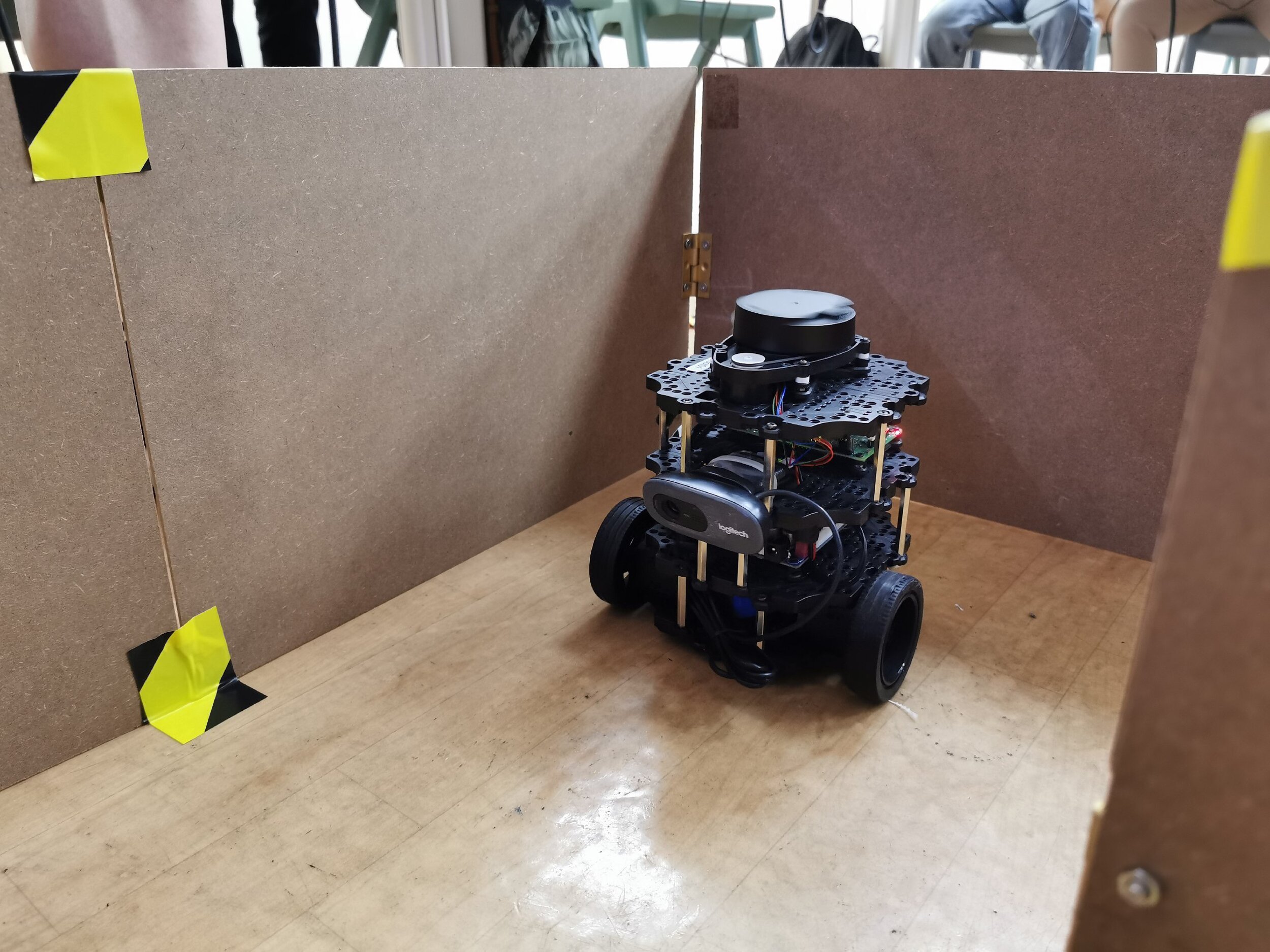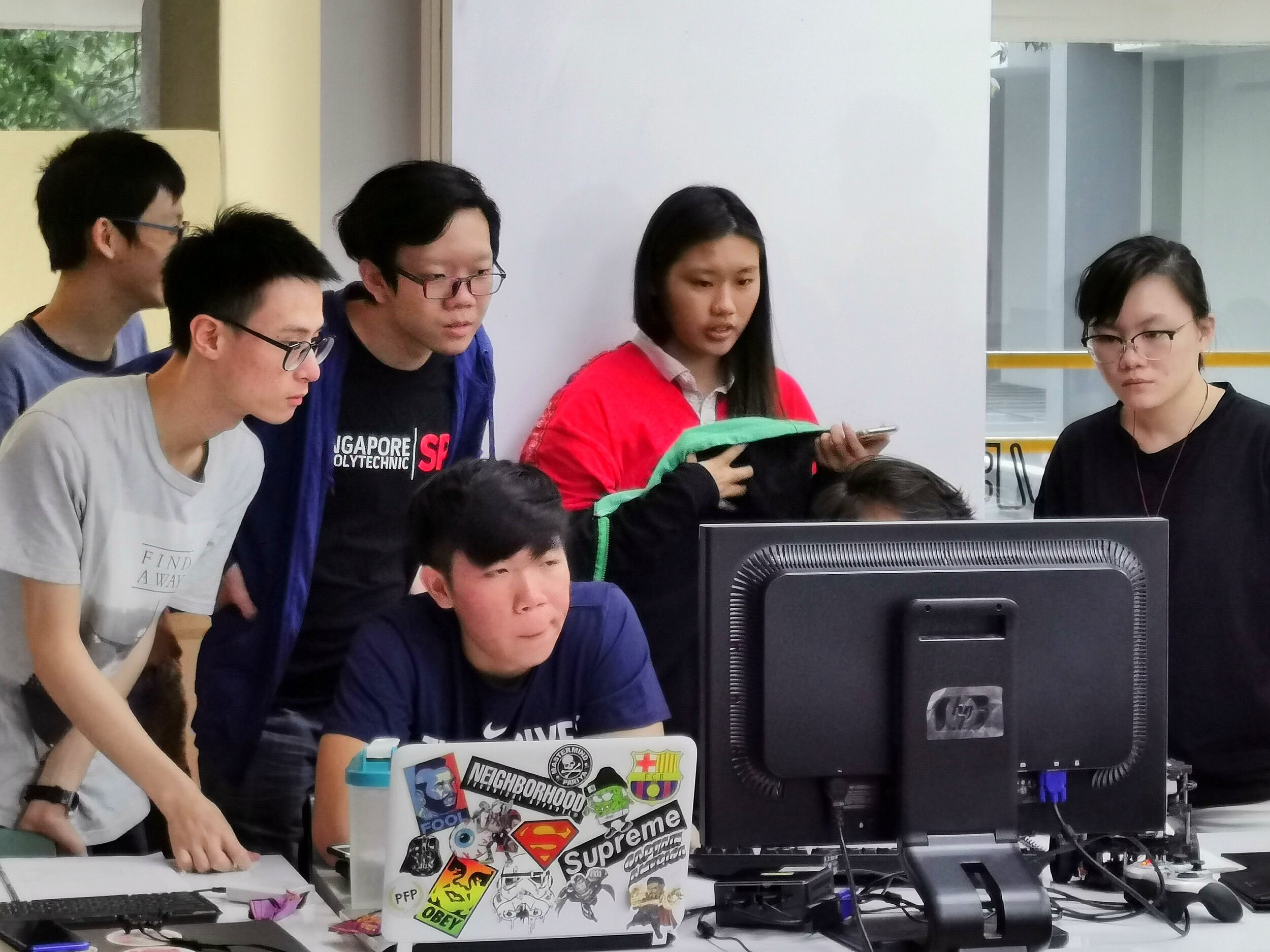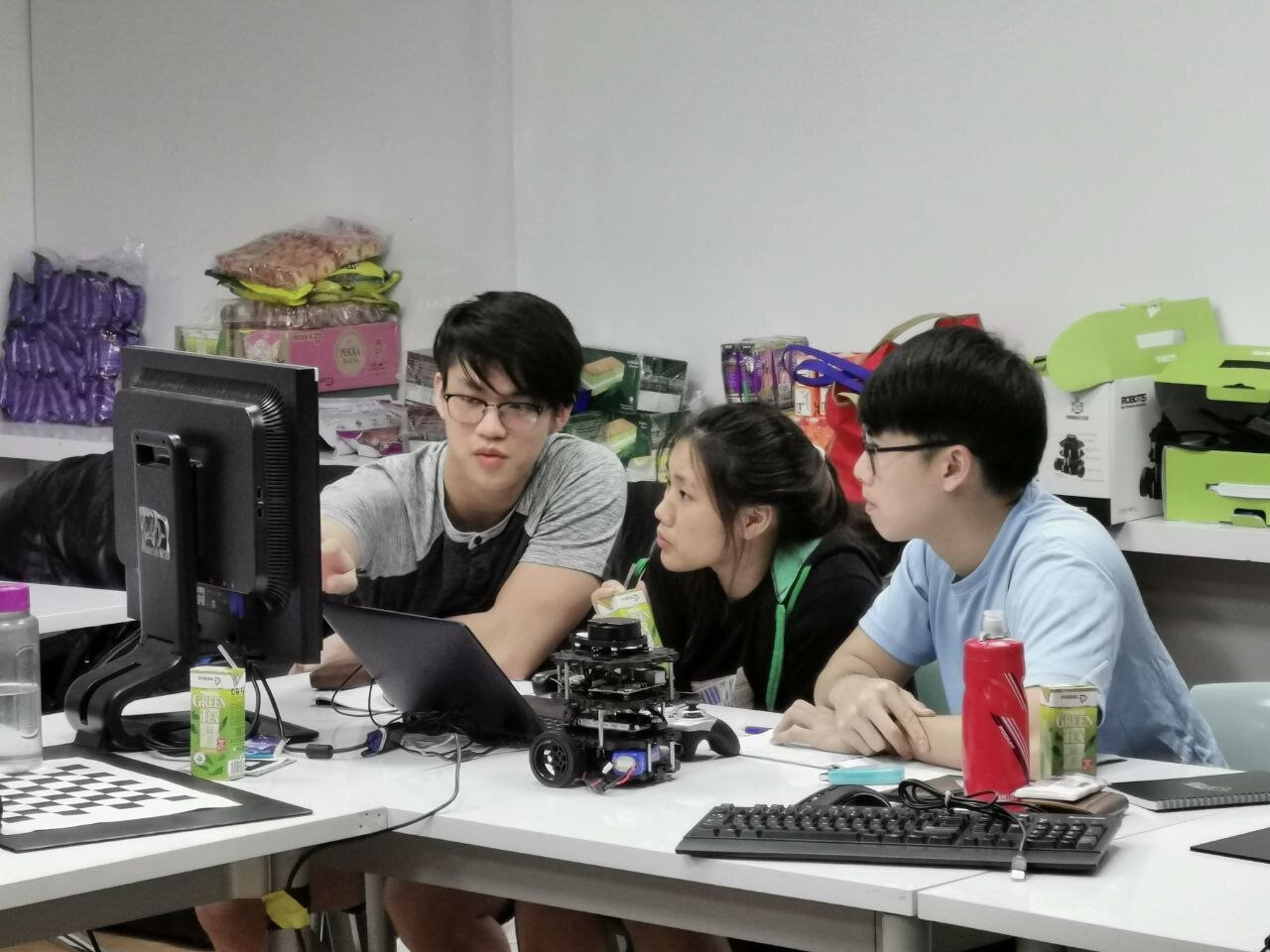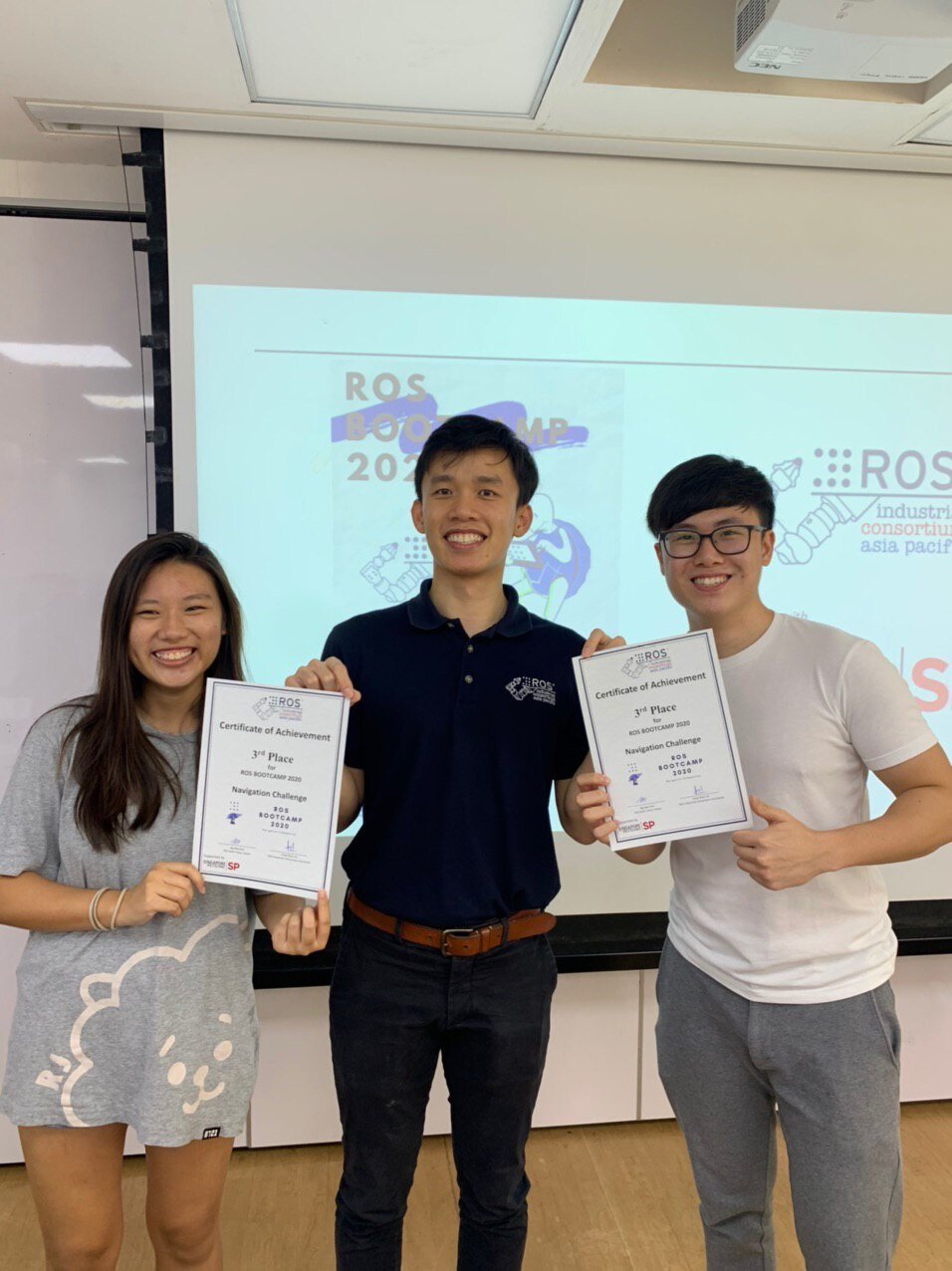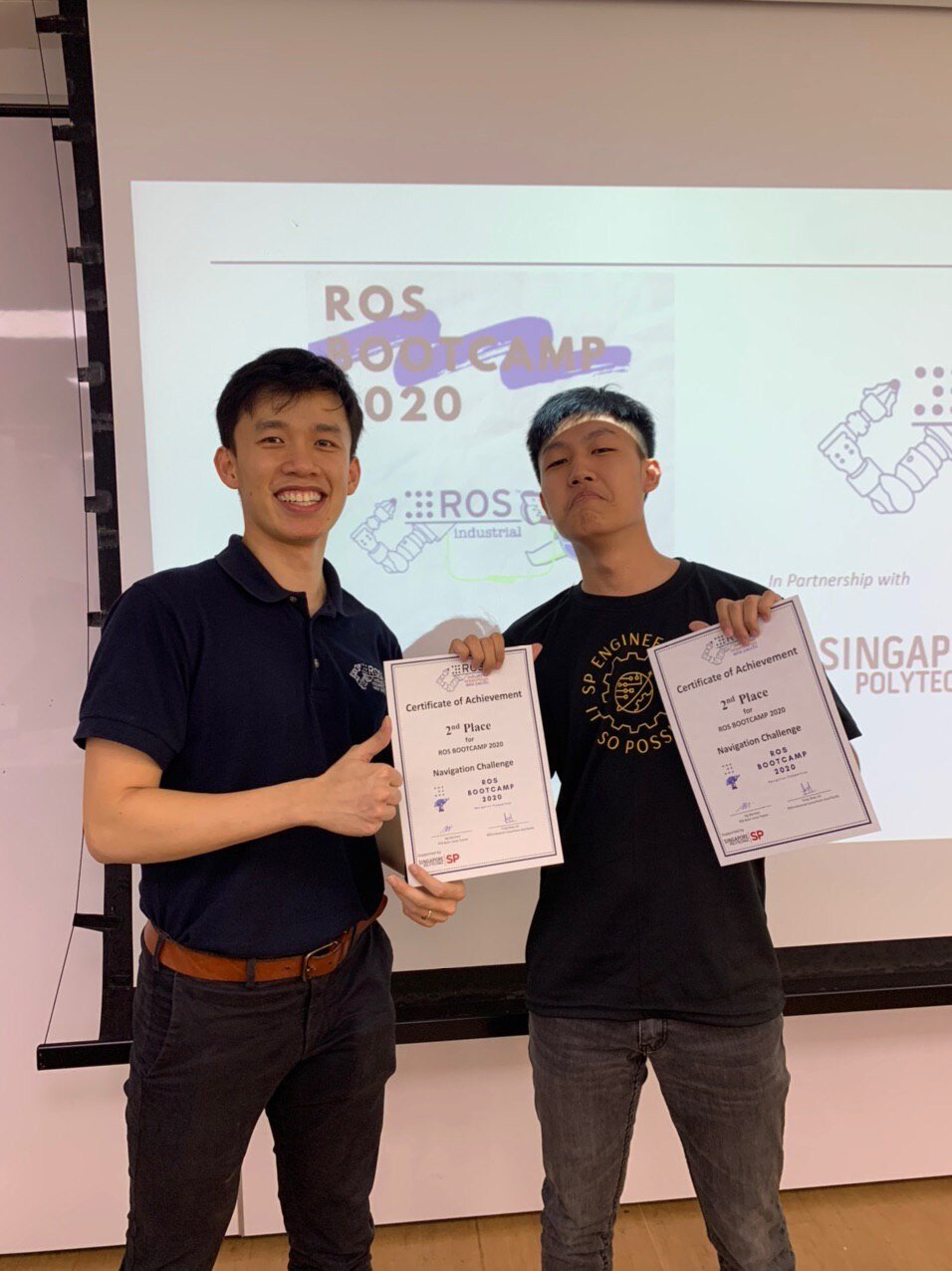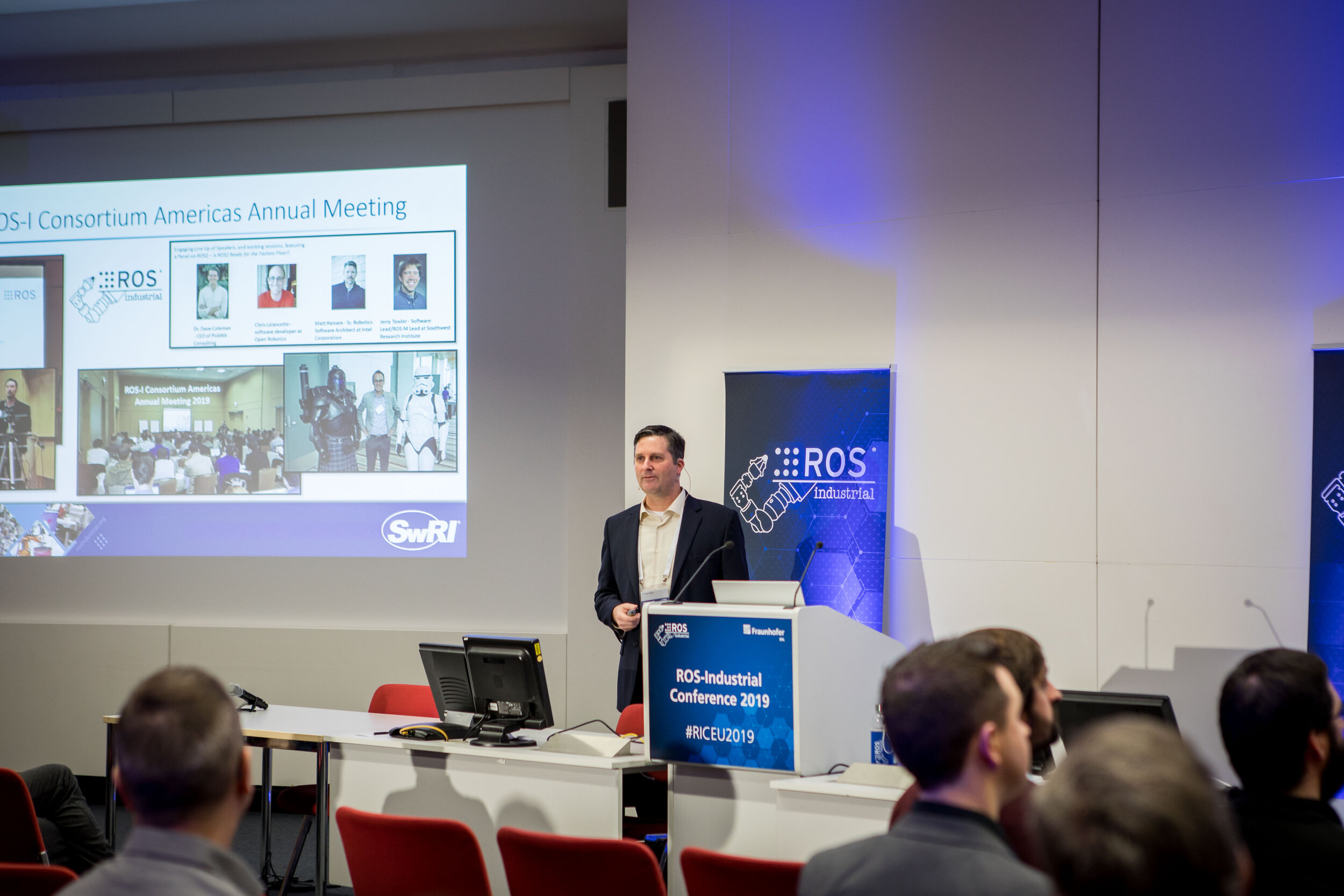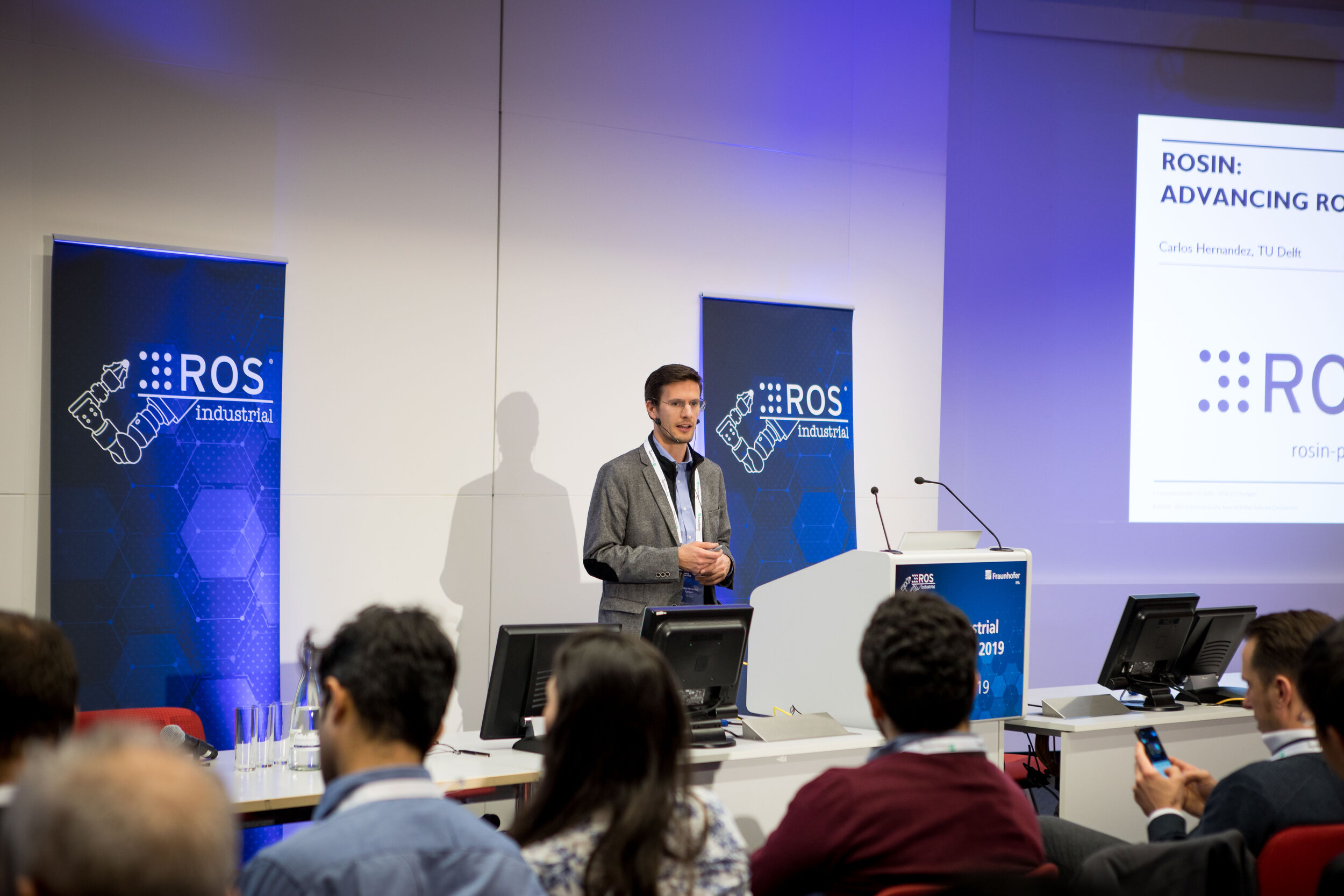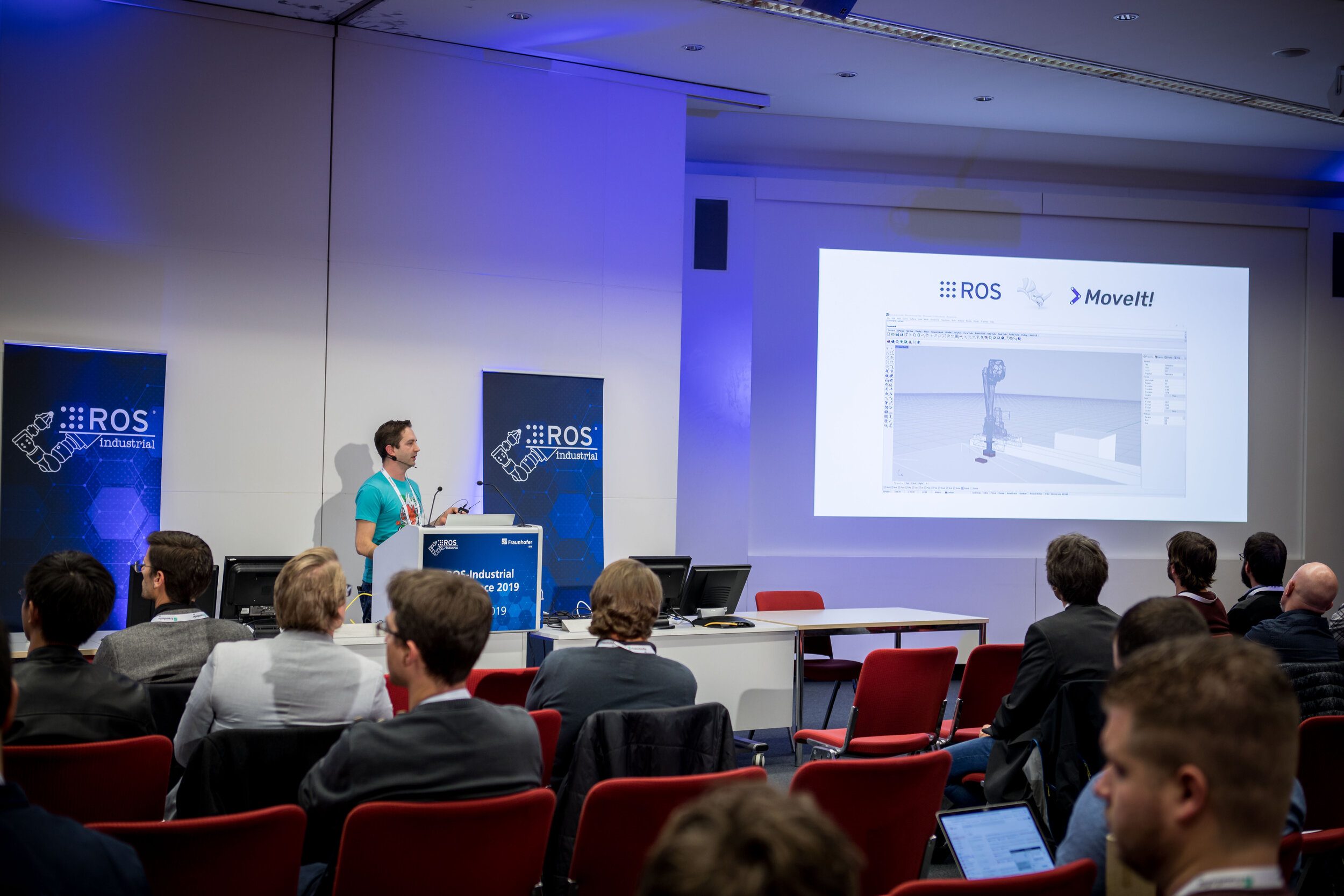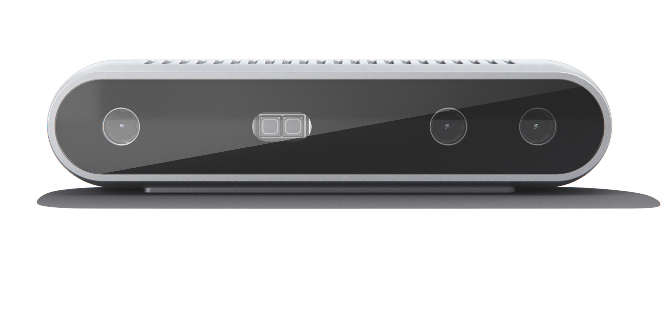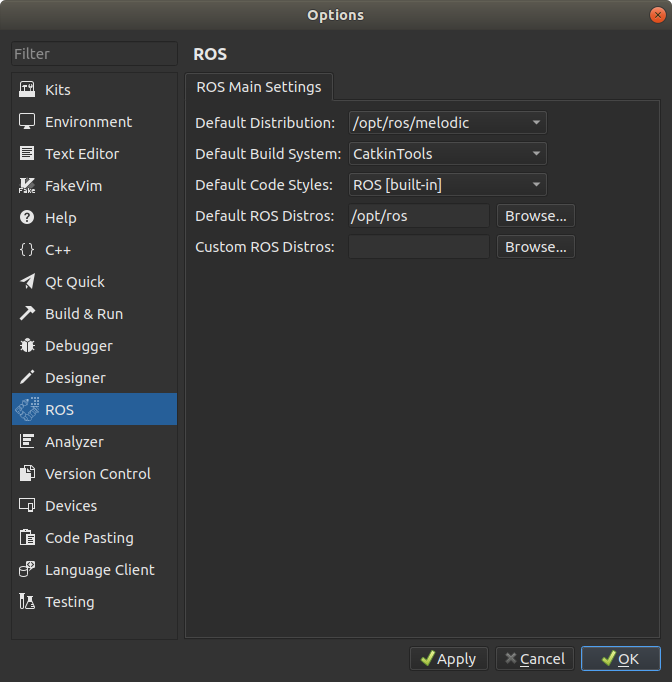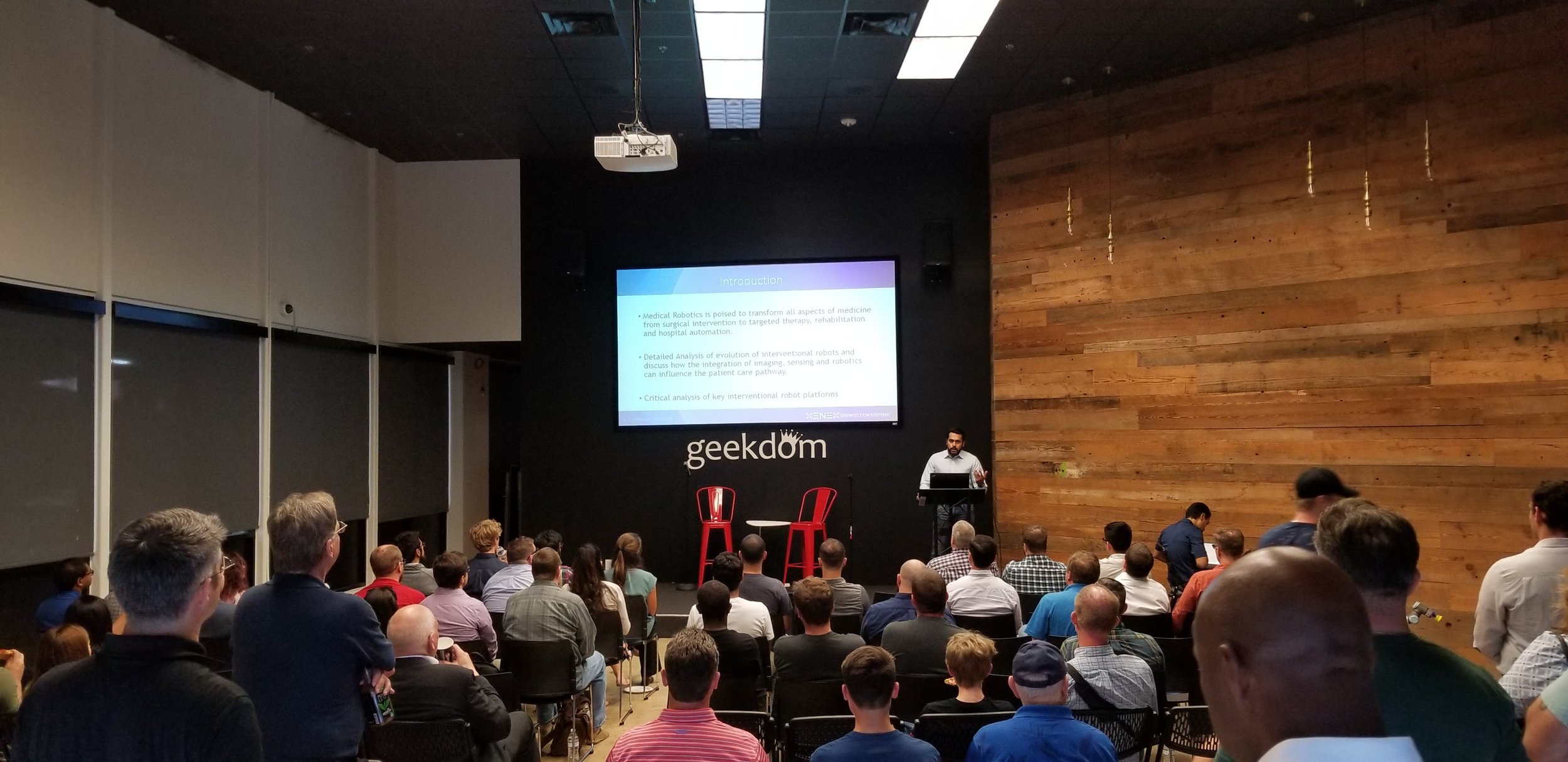Insights in „Focused Technical Projects“
As mentioned above, ROSIN has already promoted more than 50 FTPs addressing specific industry needs. Possible FTP contents were algorithms, e.g. a SLAM algorithm, application templates, improvement of existing components, process-related work, e.g. code security audits, improvement of documentation or the integration with other software frameworks. Five FTPs presented their work at the conference:
Rafael Arrais from the research institute INESCTEC talked about „ROBIN: The ROS-CODESYS Bridge“. It focusses on developing and releasing a bidirectional, reliable and structured communication bridge between ROS and CODESYS, a softPLC that can run on embedded devices and that supports a variety of fieldbuses, and even OPC UA. The developed software will allow the parametrization of ROS modules through IEC61131-3 programming languages and also streamline the interoperability between ROS and robotic hardware or automation equipment, fully empowering the Industry 4.0 paradigm of Plug’n’Produce.
The Norwegian company PPM, represented by Trygve Thommesen, developed BLACKBOX, an automated trigger-based reporting, data recording and playback unit, collecting data from robot and manufacturing systems. It takes error reporting and recovery of industrial robot systems to a new level, by developing and utilizing the innovative ROS based framework. The framework is built upon components from the project partner’s previous research and existing ROS modules.
The Spanish CATEC worked on a robust and reliable GPS-free localization algorithm for aerial robots applied to industrial applications. As Paloma Carrasco told, it focuses on safety and computational efficiency. This ROS library helps to foster the development of drone-based solutions for industrial inspections.
Olivier Michel, CEO at Cyberbotics, presented cross-platform ROS simulation for mobile manipulators. This FTP aims at developing a simulation framework for training pilots of robots used for intervention in case of a nuclear incident. These robots include industrial arms and will be controlled using ROS. The project will contribute to the ROS-Industrial community with a new open-source, cross-platform, high-performance simulator compatible with ROS for industrial robots.
Finally, Luca Muratore from IIT in Italy talked about ROS End-Effector. It provides a ROS-based set of standard interfaces to command robotics end-effectors in an agnostic fashion. Nowadays, end-effectors are controlled using customized software wrappers and specific frameworks: ROS End-Effectors aims to design and implement a universal ROS package capable to communicate with different end-effectors. The project will be ROS2 compatible and will work both in simulation (Gazebo environment) and in the real hardware.
The session ended with a lecture by Olivier Stasse, LAAS-CNRS. He reported on the use of ROS in robots that are to be used for partial automation in aircraft construction. This domain requires lightweight, safe, mobile, and versatile manufacturing cells that enable human-robot collaboration. Stasse is developing this within the framework of the “Rob4Fam” lab (Robots For the Future of Aircraft Manufacturing). Implemented technologies are real-time/interactive planning, torque control, SLAM algorithm and balance so that robots could climb stairs, screw, or drill. All will be ROS controlled. Also, ROS facilitates the integration between lab and industry.
More projects boosting ROS
Besides the research project ROSIN, there are other national or European research efforts building on or improving ROS components. One of them is the EU project RobMoSys, represented at the conference by Dennis Stampfer from Ulm University of Applied Science. It aims at developing composable models and software for robotic systems and uses a model-driven engineering approach as key enabler for complex software and system integration and for integrating existing technologies. A key component is MROS: Metracontrol for ROS2 systems, a RobMoSys-integrated technical project. Carlos Hernandez Corbato from TU Delft talked about this project that enables models@runtime to drive and architectural adaption for reliable autonomy.
On the national level, there is the German project “Service Robotic Network” (SeRoNet) that aims at building a community-driven platform for a more efficient development of service robots. With the technology behind, the design, development, and deployment of service robots in a variety of areas, from logistics, care, and healthcare to assembly support in manufacturing operations shall be made much easier than today. Through the online platform “robot.one“, users, system integrators and component manufacturers of service robot solutions will be able to collaborate efficiently and jointly support solutions from requirements analysis to deployment. In 2020, two open calls offer funding opportunities: The first call, open until late March, adresses companies that aim to make their software or hardware components compatible to the SeRoNet platform. The second call, in summer 2020, addresses end users and system integrators to propose and implement novel service robot solutions using SeRoNet technology.
Last but not least there is the project RoboPORT. Within this project, an online development platform for service robotics with an extensive library of open source robotics hardware is being created. New collaborative processes such as open innovation, crowd engineering and similar methods will be mapped on the platform to support a continuous and distributed development process. Also, the project supports ideation processes, hackathons and makeathons and offers a network of highly motivated domain experts that help realizing specific project ideas.
ROS is leaving shop floors
The EU activities around ROS are not only focused on the use of free software in production environments. The presentation by Gonzalo Casas from ETH Zurich showed how ROS can be used for architecture and digital fabrication in the construction industry. For example, a robot can use the path planning software MoveIt to build a wall with bricks.


